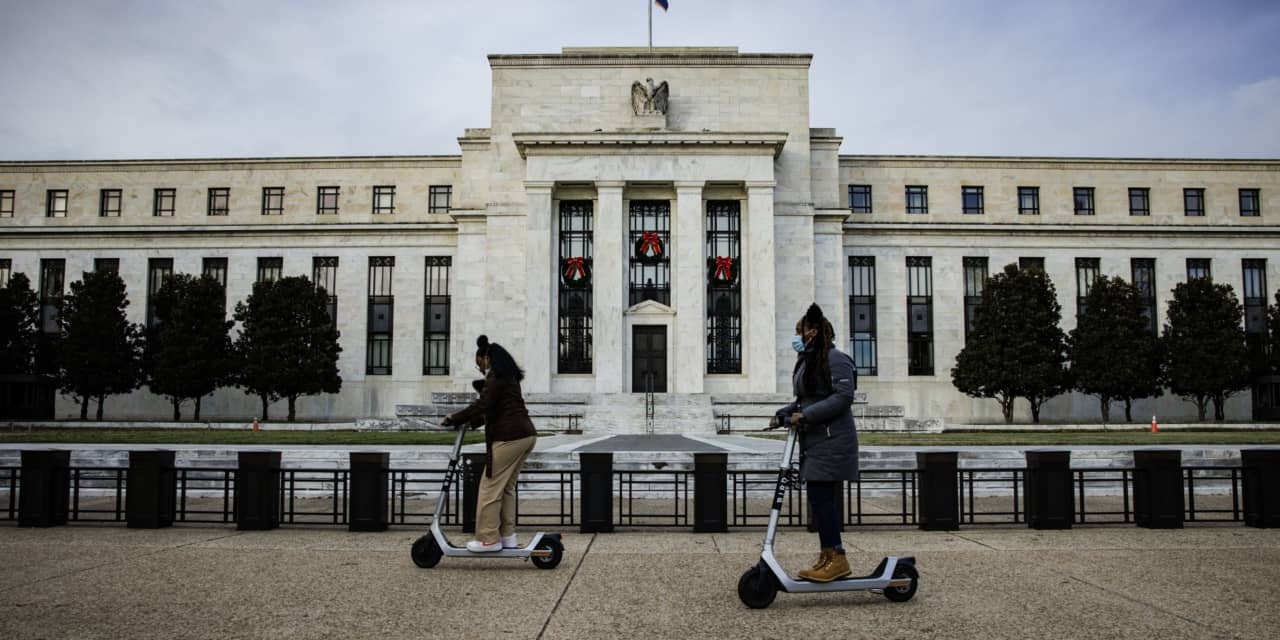Tuesday’s auction of two-year Treasury notes saw tepid demand, signaling that investor enthusiasm for Treasuries continues to soften amid concerns about the federal deficit and the path of interest rates.
The U.S. Treasury Department conducted an auction of $51 billion of two-year notes Tuesday afternoon.
Investors accepted 5.055% as the highest yield on the two-year note Tuesday in the auction, matching the expected yield, suggesting in-line demand. But two other key metrics used to judge auctions came in weak.
The bid-to-cover ratio came in at 2.64 times, lower than 2.73 times seen in September’s two-year auction and 2.94 times in August. It was also lower than the average for the last six auctions of 2.82 times, according to Bloomberg. Falling bid-to-cover ratios typically mean that there are fewer bids relative to the amount of debt being offered, indicating less robust interest from investors.
Primary dealers, who buy up supply not taken by bidders, had to accept 17.6% of the notes sold, their largest take since April, according to Bloomberg.
The two-year’s lukewarm reception comes after a weak sale for the 30-year bond earlier this month, though 20-year bond’s recent auction was strong.
Tuesday’s sale sets an uncertain tone for a series of U.S. government bond auctions this week, with five-year and seven-year notes set for sale on Wednesday and Thursday, respectively. And taken all together, the response to this month’s Treasury offerings suggests that investors are squarely focused on the challenges in both the bond market and the broader economy.
Investors have raised concerns around U.S. debt as the federal budget deficit—spending in excess of revenue—hit an estimated $1.7 trillion in fiscal 2023, higher than the $1.4 trillion last year, according to Congressional Budget Office data released Oct. 10. Higher spending leads to higher issuance of government debt. SIFMA Research, which tracks the U.S. Treasury market, said issuance as of September 2023 was 26% higher than a year ago.
“There is no doubt that the record U.S. federal budget deficit is putting upward pressure on Treasury bond yields,” wrote Navellier & Associates founder Louis Navellier on Monday, in a note about the broad rise in Treasury yields.
Ample supplies of bonds can also lead to investors demanding higher yields and in turn causing bond prices to fall, as bond prices and yields move inversely.
Along those lines, part of the soft demand for Tuesday’s auction could be due to the size of the offering. The auction size of $51 billion was $3 billion larger than last month’s similar auction and “$9bn larger than levels earlier this summer,” wrote Jay Barry, J.P. Morgan co-head of U.S. rates strategy in a note on Monday.
Another reason investors likely have been skirting Treasuries is the possibility for the Federal Reserve to raise interest rates further in the future. That would likely drive up yields further, reducing the value of the notes. In the very near term, however, the Fed is expected to keep rates on hold at its next policy-setting meeting in November.
After the auction, the 2-year note rose 0.043 percentage point to close at 5.103% on Tuesday, a typical reaction when demand is weak.
Correction & Amplifications:
The yield on two-year Treasuries rose 0.043 percentage point on Tuesday. An earlier version of this article incorrectly said it rose 0.43 percentage point.
Write to Karishma Vanjani at [email protected].
Read the full article here











Leave a Reply